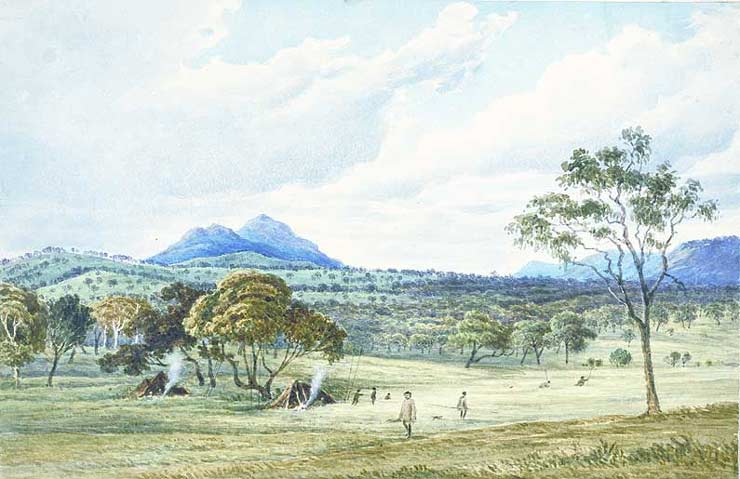 'Panorama of Challicum, No. VI', c1850
'Panorama of Challicum, No. VI', c1850
TLF ID R3260
This is a watercolour measuring 17.2 cm x 26.2 cm showing the twin peaks of Mount Langi Ghiran rising behind the smaller tip of Conical Hill. Two distant mountains on the right are Ben Nevis and Mount Buangor. A camp of Indigenous Djapwurrong people, consisting of two bark and wood dwellings, is situated on the edge of sparse forest. Several spears are embedded into the ground near two fires, alongside four people. Four other people are foraging or hunting. The artist, Duncan Cooper, included this painting as the fourteenth watercolour in his field sketchbook and inscribed the title 'Panorama of Challicum, No. VI' on its mount. The watercolour is the sixth of nine panoramas which together form a cyclorama of the Challicum area.
